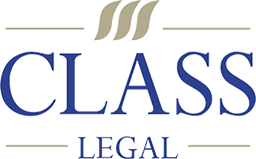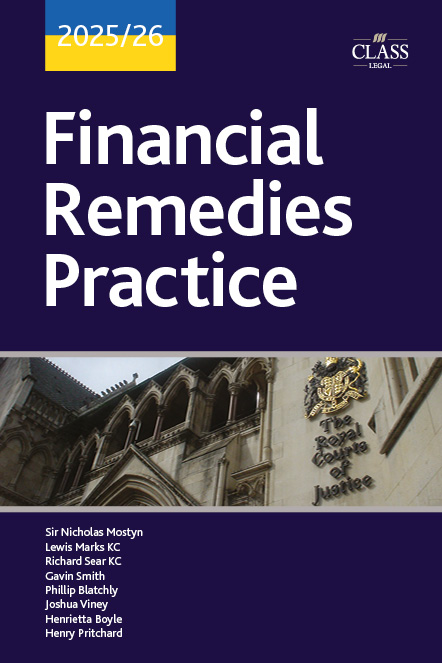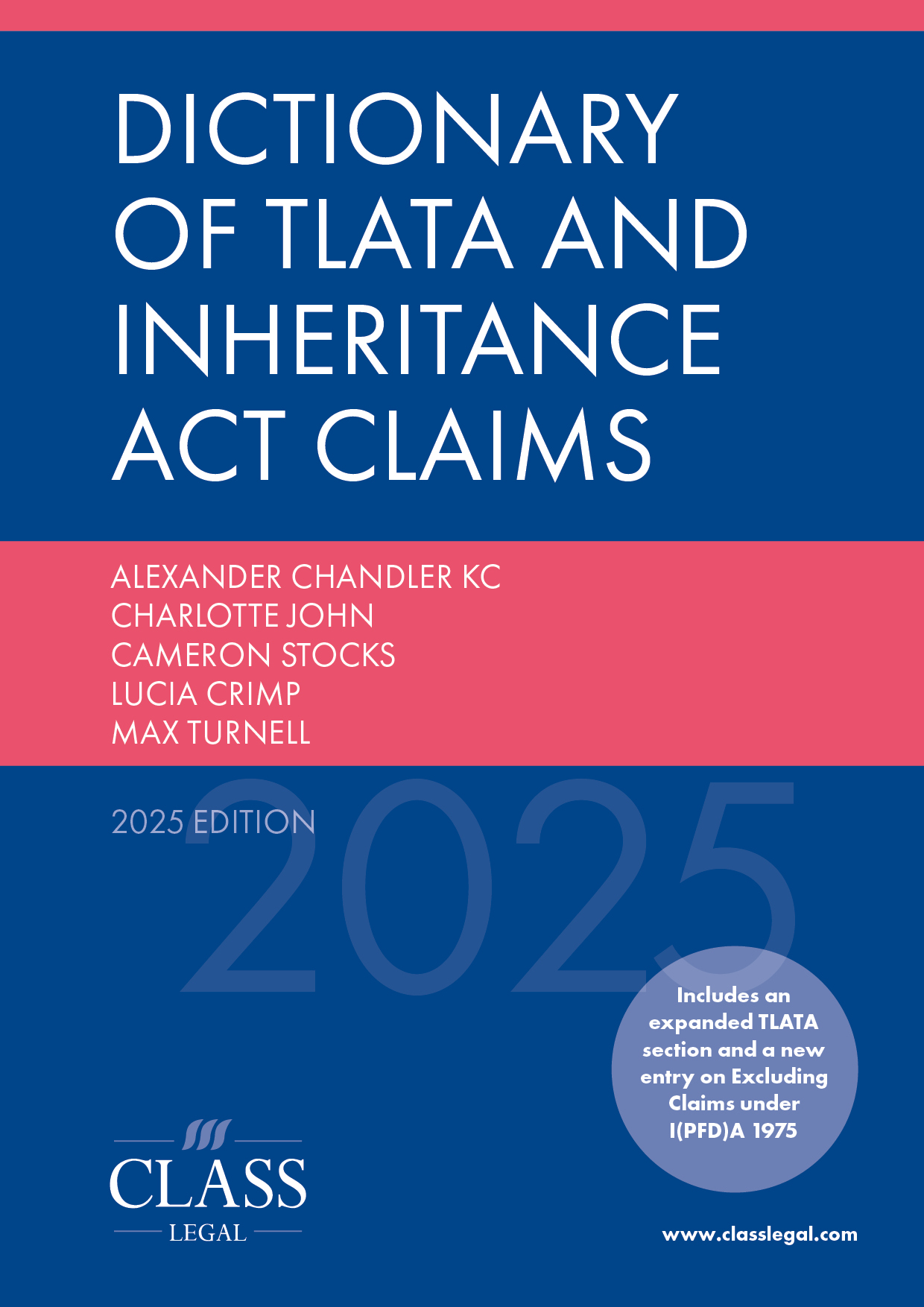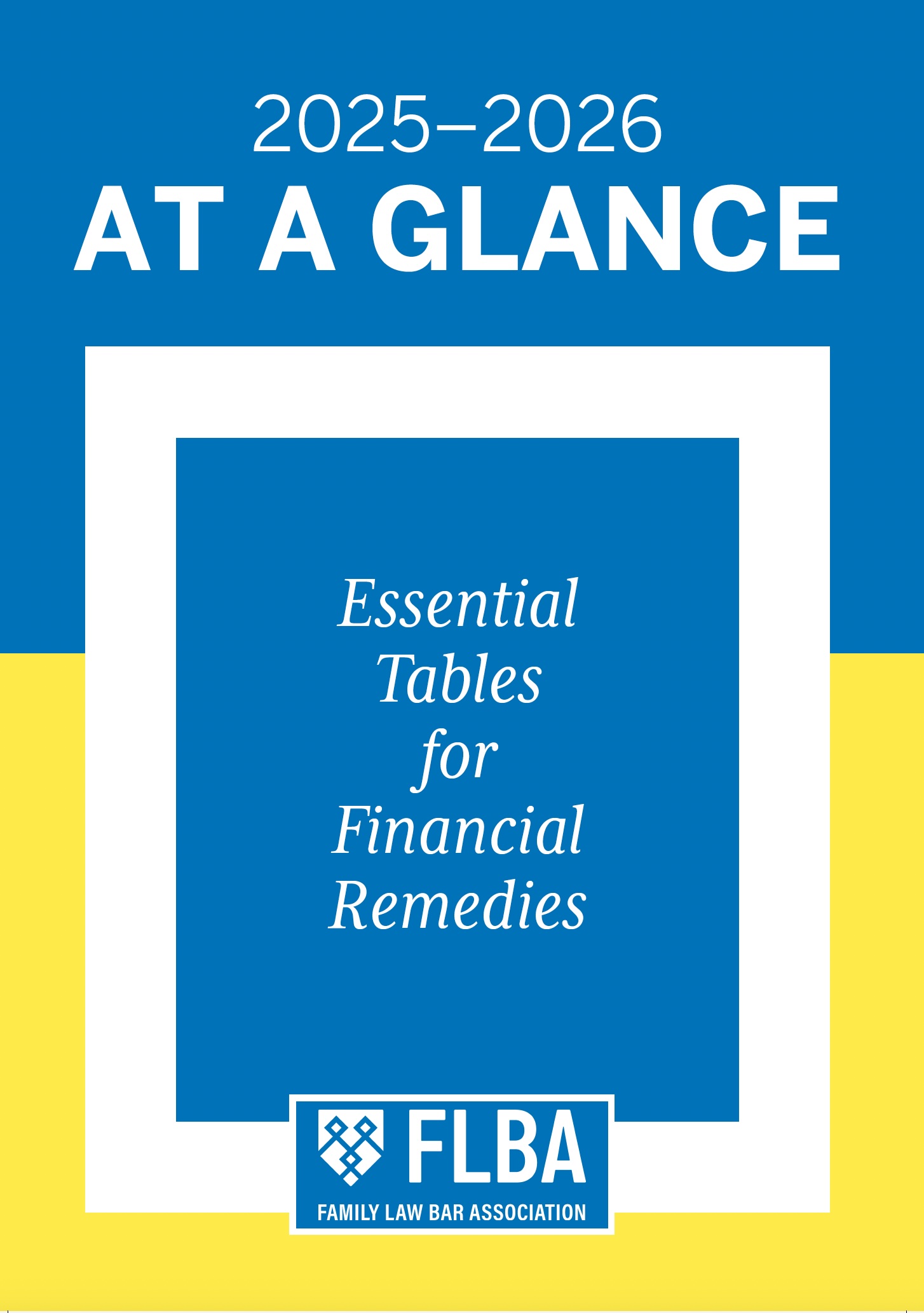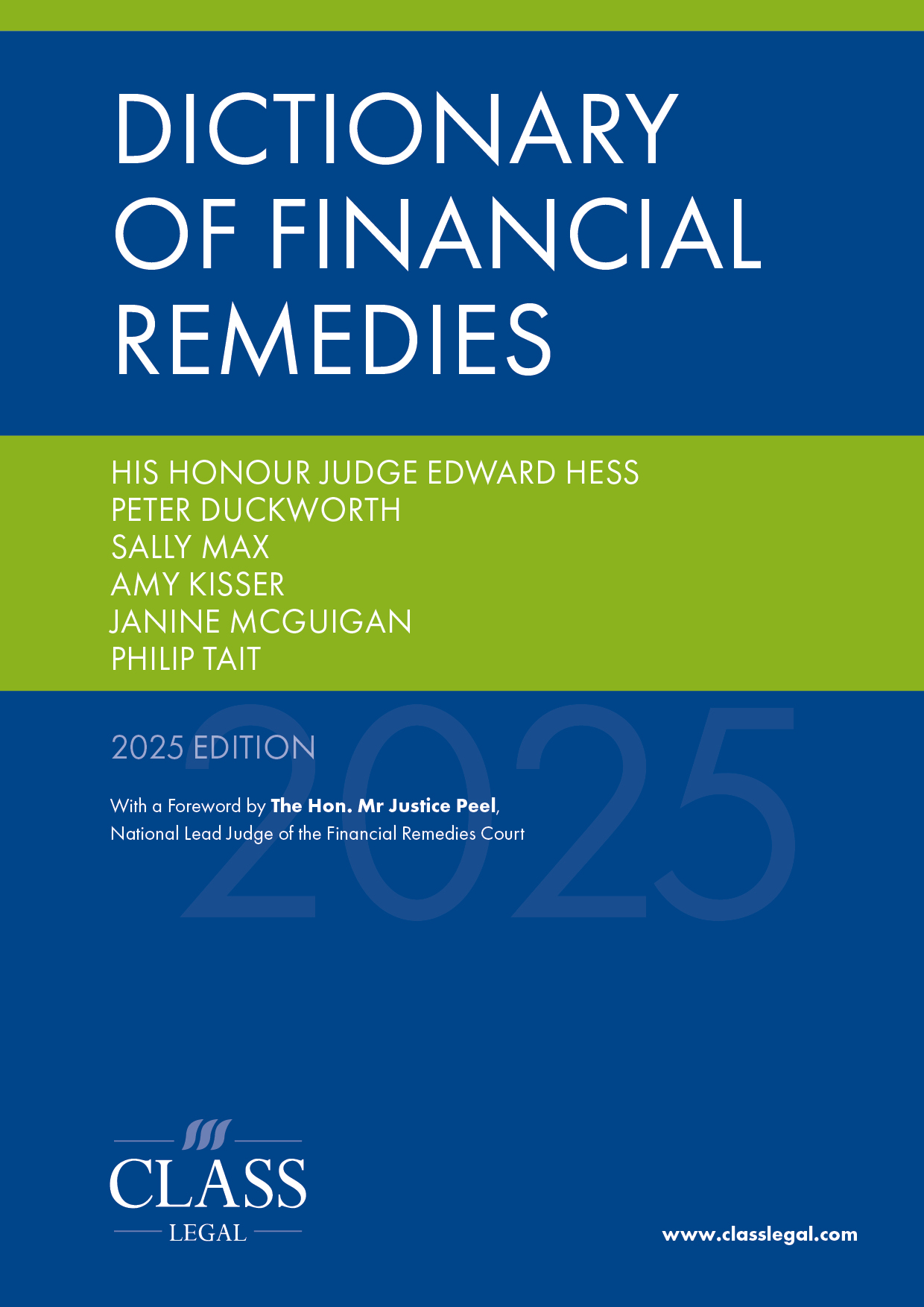
CH v TH [2024] EWFC 135 (B)26 April 2024
Published: 11/02/2025 14:00
https://caselaw.nationalarchives.gov.uk/ewfc/b/2024/135
HHJ Willans. Final hearing in FR proceedings involving parties with widely conflicting views as to the resources available. The outcome was a modest departure from equality with a 53% split in W’s favour.
Background
W was 43 and H was 40. It was a marriage of nearly 19 years, producing two children, N (an adult in his first year of university) and R (rising 13). R remained in the FMH (‘CR’) with W following the parties’ separation in 2020, and N continued to visit regularly. H moved into his business premises, which had residential premises attached (‘RR’).
W was employed in the banking sector. H operated a personal grooming / body modification business, both personally out of his business premises, and by leasing his premises on a daily charge or commission basis to independent operators.
There were four properties:
- CR: the FMH. Inclusive of its annex, which was rented out, its agreed net equity was £343,811.
- AR: a mixed commercial/residential property. H operated his business from the residential part. Pre-separation, the residential part was rented out; post-separation, it had been occupied by H. Its equity was between £302,628 and £313,358, depending on CGT.
- X: a property with agreed equity of £40,000. There was a dispute over ownership of X: H claimed it was owned by W; W claimed was owned by her father.
- RR: a property sold in August 2024 for (net) £195,887. There was a dispute over the use to which proceeds had been put.
The parties’ open offers were as follows:
| W’s Proposal | H’s Proposal | |
| CR | To W | To W |
| AR | To H | To H |
| Joint accounts | Split 50:50 | Split 50:50 |
| Joint debts | Paid by H | Split 50:50 |
| W’s pension | Retained by W | Split 50:50 |
| Lump sums | H to pay £207,600 | W to pay £76,987 |
The issues
The main issues with which HHJ Willans had to grapple were:
- Allegations of controlling behaviour.
- Dispute as to H’s earning capacity.
- Dispute as to each party’s housing needs.
- Dispute as to the use to which the proceeds of RR has been put.
- Dispute as to the ownership of X.
Procedural Issues
HHJ Willans was highly critical of the manner in which the final hearing was prepared for and conducted by the parties. There was a failure to abide by the PD 27A page restriction and the FDR Order – which also stipulated a page restriction – and significant delay such that matters could not be concluded within the final hearing timeframe, which HHJ Willians considered ‘an inescapable consequence of the need for last minute consideration of documents and a changing evidential landscape as the evidence was probed’; [2].
Another issue was the adversarial nature in which the parties had presented their cases which meant that the court was lacking proper information on which to base its decision. In terms of property particulars, HHJ Willans reminded the parties that ‘there is an onus on both parties to inform the court as to the likely cost of replacement properties within the band set by the “housing need”. This process is not adversarial but inquisitorial. The court is seeking a fair outcome. It is not for the court to be presented with two stark options and a choice to pick one or the other’; [31].
Allegations of controlling behaviour
HHJ Willans addressed at the outset the parties’ allegations of controlling behaviour: H took issue with the fact that W had been in control of the family finances, including H’s business’s annual returns; W claimed that H was controlling in failing to support W and the family and took action to harm W’s financial circumstances (e.g. by not making child maintenance payments).
HHJ Willans determined that W had controlled the family’s financial affairs, and H did fail to support W, but neither amounted to financial abuse: W’s ‘control’ of the financial affairs ‘simply reflects the wife’s greater acumen in this area’ and ‘it was a perfectly natural role for her to take’; [22]. H’s failure to support W came not as a result of him being unwilling to support the family, but of him being unable to do so.
H’s earning capacity
W asserted that H’s earning capacity was c.£200,000 per annum. HHJ Willans took issue with how W had come to this figure: it was not based on an anticipated increase in income in the future, was based on gross figures, and was calculated by reference to an estimated hourly return, multiplied to reach a yearly income. It also relied on HHJ Willans proceeding on the basis that H simply wouldn’t declare his income for the purposes of his tax return in the future. HHJ Willans found W’s case to be ‘entirely speculative’ and also out of line with the impact the pandemic had on H’s business, the fact that the parties’ lifestyle did not reflect that H had the income W was asserting, and the reliance H had had on familial support post-pandemic.
H presented his earning capacity as reaching c.£35,000 following difficulties during the pandemic, although he accepted a potential to reach £50,000–£70,000 in the future. HHJ Willans found him to be ‘opaque’ about his earning position; [24].
HHJ Willans ‘was not much impressed by either of the parties and felt [he] was not be provided with an accurate assessment of either historic or likely future income’; he ‘found it hard to reach clear conclusions given the approach taken by both parties’; [28]. His ‘decision making [was] impacted by an unhelpfully high level of speculation’ but was informed by the history. He ultimately concluded that H likely had an earning capacity of around £48,000 (net) per annum, on the basis that the pandemic will have significantly impacted H’s business, but that its profit would improve with the assistance of H’s own efforts and help from third parties.
Housing needs
HHJ Willans was critical of the parties for the way they’d presented their case as to the other’s housing needs. The property particulars provided were unhelpful in that they were extreme; [31]. W claimed that she needed a four-bedroom property and H needed a one-bedroom property. Her alternative properties (to CR) put forward were ‘of no meaningful assistance at all’; HHJ Willams was ‘unsure who considered [he] would be assisted by being shown 4-bedroom properties in a plainly more expensive local area … [he] might just as well have been shown a property in Mayfair for all the assistance these properties had given [him]’; [35].
HHJ Willans concluded that W had greater housing need; she was R’s primary carer and N visited the home very regularly. Although N was an adult, HHJ Willans determined that her current needs included housing N ([35]), although he needed only a smaller third room. HHJ Willans did not accept that H had a housing need of only a one-bedroom property on the basis that R’s relationship with H had broken down. W therefore required a three-bedroom property, and H a two-bedroom property.
Proceeds of sale of RR
The parties agreed that (i) RR had been sold, and (ii) a significant portion of its proceeds had been put towards R’s private education. There was a remaining £76,000 of the proceeds about which the parties were in dispute. HHJ Willans found the sum was no longer available, and had not been recklessly spent. In reaching his conclusion, he considered the impact the pandemic had on H’s business, and that £25,000 had been used on home improvement. It was relevant that W’s case relied on the fact that the proceeds had necessarily been spent on the family due to a reduction in the family’s income (hence why RR had been sold), which was at odds with her financial abuse argument. It showed that H was unable, rather than unwilling, to support the family.
Ownership of X
It was agreed that X was to be sold to W’s father. H’s case relied on the fact that W’s name was still on its title. W claimed that this was due to W and her father not being in the same jurisdiction at the same time, rendering transfer difficult, and the impact the pandemic had on the procedural steps to transfer the property. Again, HHJ Willans reiterated the difficulty he had had as he was ‘not assisted by any evidence beyond the evidence of the wife and the essential suspicion of the husband’; [39].
Section 25 analysis
Also relevant in HHJ Willans’ conclusion as to the appropriate division of assets was that:
- Both AR and CR (the annex) produced a rental income which contributed towards the mortgage payments owed on those properties. The mortgage payments owed on CR were, however, higher.
- W had pension rights of £184,000 accrued during the marriage; H did not have a pension.
- H had a slightly better earning capacity but a lower level of income and a reliance on third party support for income.
- Both had been able to borrow from family. HHJ Willans had reference to the principles set out in WC v HC (Financial Remedies) [2022] EWFC 22 at [23] and concluded that ‘given the history … there may be future generosity from both families but … it would be unsafe and likely to generate an unfair outcome were [he] to centrally base the future housing resource of either party on supposition as to what this might be’. Although H said his family would always be there to help him, there was no evidential confirmation from his family members and there was evidence of his having to borrow commercially in the past; [48].
- W had overstated her income needs significantly, rendering her budget ‘a wholly unhelpful document … There is a duty of candour on a party and this document fails any test of reasonableness’; [51].
- R’s school fees constituted a luxury; the financial decision to enrol him in private school was not consistent with the parties’ finances and the fees risked ‘driv[ing] a coach and horses through their ability to meet regular income needs’ should they be included in calculations.
- Both parties had significant debts. HHJ Willans made reference to P v Q (Financial Remedies) [2022] EWFC 89 at [19(x)] and [26]. The debts were provided by family members ‘without a firm commitment to repay’, but instead an expectation of repayment ‘if possible’.
- Accountancy fees and H’s litigation loan were business-related and should lie with him.
- Procedural misconduct was a matter for costs, if at all; [69].
Conclusions
R was the court’s first consideration. HHJ Willans’ outcome did not prioritise his private education but did consider his needs primarily. His approach ensured stability for R. HHJ Willans stressed the need for his outcome to allow R the opportunity to repair his relationship with H, and for the children to be able to see both parents have an opportunity to prosper post-separation. HHJ Willans also noted that H has a higher income, but his position is more precarious. The overall outcome was a 53:47 split in W’s favour:
| CR | To W (H to remain on the mortgage) |
| AR | To H |
| Joint accounts | Split 50:50 |
| Personal debts | Where they lie |
| Joint debts | Paid by H |
| W’s pension | Split 50:50 |
Anonymisation
HHJ Willans considered Xanthopoulos v Rakshina [2022] EWFC 30 and H v News Group Newspapers Ltd [2011] EWCA Civ 42 and noted in particular the impact on the children should the judgement not be anonymised, and the lack of public interest in the judgment. On balance, anonymisation was necessary.

